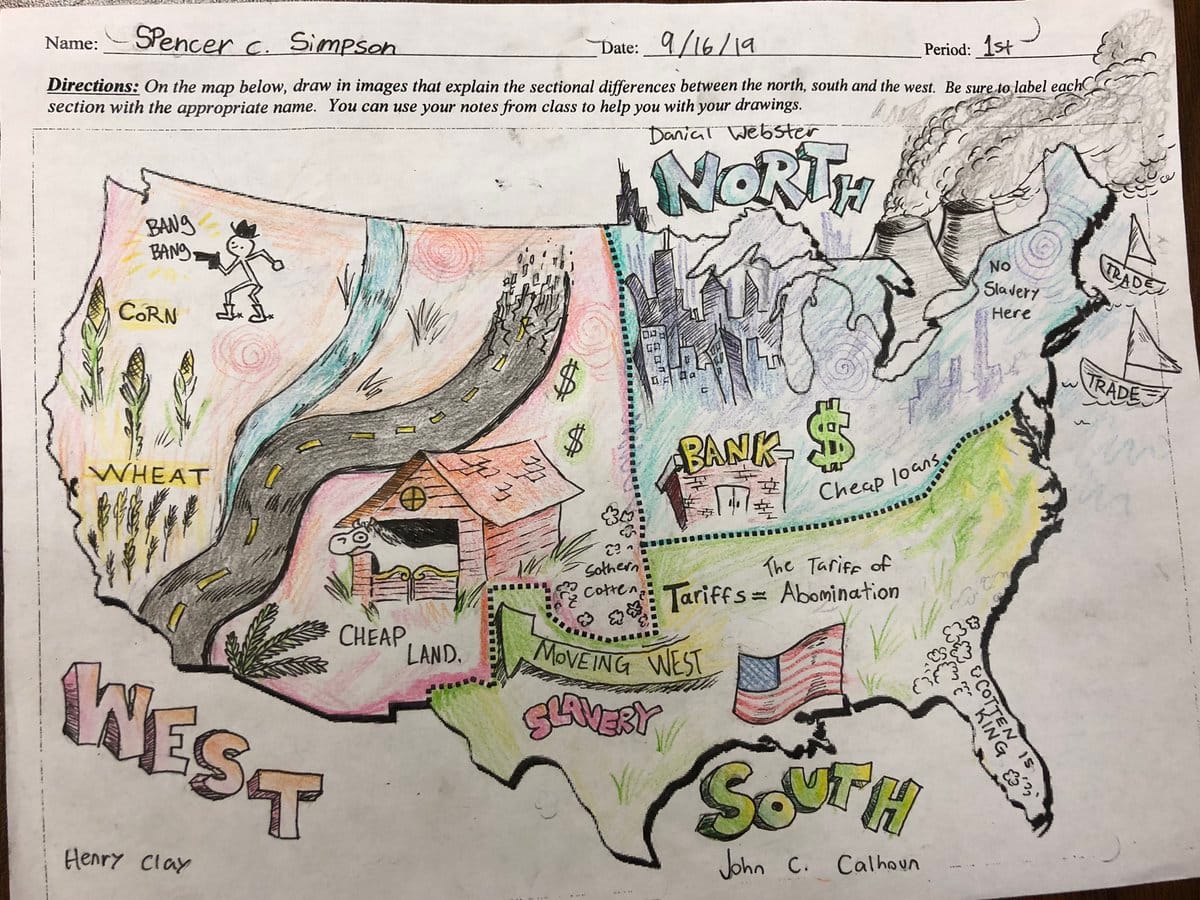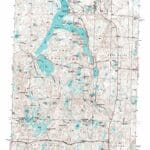Sectionalism, the fierce loyalty to one’s region over the nation as a whole, profoundly shaped 19th-century America. Like a fractured mirror, it reflected the nation’s internal struggles, ultimately shattering into the Civil War. Sectionalism maps serve as invaluable tools for understanding this turbulent era, visually depicting the geographic, economic, social, and political fault lines that divided the nation. These maps offer a powerful lens through which to explore the roots of the conflict and its lasting legacy.
Visualizing America’s Fault Lines: Understanding 19th-Century Sectionalism
Imagine 19th-century America not as a unified nation, but a mosaic of regions, each with its own distinct identity and priorities. This is the essence of sectionalism. Sectionalism maps illuminate these regional distinctions, revealing the complex interplay of factors that fueled the nation’s descent into civil war. To truly understand this era, we must delve into the economic, social, and political landscapes that shaped these divisions.
The economic chasm between the industrial North and the agrarian South was a major source of tension. The North, with its burgeoning factories and emphasis on commerce, championed “free labor,” while the South’s economy remained tethered to agriculture, particularly cotton, and reliant on enslaved labor. This fundamental difference in labor systems became a defining characteristic of each region, a point of pride for some, and a source of moral outrage for others. Westward expansion further exacerbated these tensions, as the question of whether new territories would be free or slave states became a constant battleground. [https://www.lolaapp.com/upperville-va-county] and [https://www.lolaapp.com/upperville-virginia], for example, represent distinct regional identities within the larger context of sectionalism.
Social disparities further widened the divide. As abolitionist movements gained momentum in the North, fueled by the powerful voices of figures like Frederick Douglass, the South doubled down on its defense of slavery as integral to its way of life. These clashing values created an unbridgeable chasm.
Sectionalism maps vividly capture these disparities. They depict the concentration of factories in the North versus the sprawling plantations of the South, the stark line between slave and free states, and the regional voting patterns that mirrored these deep divisions. These maps aren’t merely geographical representations; they are narratives of a nation fracturing.
The consequences of this growing rift were far-reaching. Politically, it led to the rise of opposing parties locked in fierce debates over states’ rights versus federal authority, a tension embedded in the Constitution itself. Events like the Missouri Compromise, a desperate attempt to maintain a fragile balance, and the inflammatory Dred Scott Supreme Court decision, further inflamed sectional tensions. These events were not isolated incidents but symptoms of a nation on the brink of self-destruction. Ultimately, sectionalism ignited the Civil War, the bloodiest conflict in American history.
It’s important to acknowledge that historical interpretations of this period continue to evolve. While the North-South divide is often emphasized, the reality was far more nuanced, with internal divisions within each region and individuals who defied easy categorization. Ongoing research continually sheds new light on the complexities of this era.
Decoding the Divisions: Why Sectionalism Maps Matter
Sectionalism maps provide a crucial lens for understanding 19th-century America, offering a visual representation of the regional loyalties that superseded national unity. These maps are not static images; they are dynamic narratives of a nation grappling with fundamental differences.
These maps go beyond simple geographical boundaries. They reveal the spatial distribution of economic activities, political affiliations, cultural values, and demographic shifts. They highlight the stark contrasts between the industrial North and the agricultural South, the battle lines between pro-slavery and abolitionist factions, and the migration patterns influenced by these divisions.
By tracing these divisions over time, we can witness the growing polarization and the erosion of national unity that ultimately culminated in the Civil War. The maps illuminate the underlying causes and consequences of sectionalism, illustrating the profound impact of slavery, economic disparities, and political conflicts.
They also help us understand the why behind the divisions. They contextualize how issues like slavery, economic inequality, and political disagreements intertwined to unravel the fabric of the nation. For example, they can show how access to resources, like fertile land or mineral deposits, shaped regional economies and political priorities. They can even suggest how these internal tensions influenced the nation’s foreign policy.
It’s important to remember that historical interpretation is an ongoing process. New research continually offers fresh perspectives, and our understanding of sectionalism, like any historical phenomenon, is subject to change. Some historians might emphasize economic factors as the primary drivers of sectionalism, while others may prioritize the moral debate over slavery. This ongoing scholarly conversation enriches our understanding of this critical period.
While sectionalism maps offer invaluable insights, it’s crucial to acknowledge their limitations. They may not fully capture the nuances of public opinion or the lived experiences of individuals. They provide a broad overview, but the individual stories and complexities that lie beneath the surface are equally important.
By studying these maps, we gain a deeper, more nuanced appreciation for the forces that shaped 19th-century America. They challenge us to think critically, question assumptions, and recognize that history is rarely a simple narrative with easy answers.
A Cartography of Conflict: Types and Interpretations of Sectionalism Maps
Sectionalism maps offer diverse perspectives on regional divisions, acting as windows into the past. These maps are not simply geographical representations; they are visual narratives of a nation grappling with fundamental differences. They can reveal economic disparities, political fault lines, and cultural divides, offering crucial insights into the complexities of sectionalism.
Varieties of Sectionalism Maps
Different types of maps provide unique insights into the multifaceted nature of sectionalism. Think of them as different lenses through which to examine the same complex issue.
Population Density and Demographics Maps: These maps illustrate population distribution and demographic characteristics, such as age, ethnicity, and income. They can reveal how population shifts and demographic differences contributed to sectional tensions. For example, a rapidly growing region might feel politically marginalized if its representation doesn’t reflect its increasing population.
Electoral Maps: These maps depict voting patterns, showing how regional interests and identities influenced political choices. Entire regions voting as a bloc suggest the powerful influence of sectionalism on political behavior.
Economic Maps: These maps illustrate economic activities, such as agricultural production, industrial output, and trade routes. They can reveal economic disparities between regions, shedding light on potential sources of resentment and conflict. For example, a region reliant on agriculture might clash with a region focused on manufacturing over issues like tariffs.
Resource Maps: These maps depict the distribution of natural resources, such as minerals, timber, and fertile land. Unequal access to resources can be a major driver of sectionalism, creating both advantages and disadvantages for different regions.
Interpreting the Maps
Analyzing sectionalism maps requires careful consideration of several factors:
Historical Context: A map from 1850 tells a different story than a map from 1870. Understanding the historical period is essential for accurate interpretation.
Data Sources and Bias: Consider the source of the data and potential biases. Some groups may be underrepresented or omitted entirely. For instance, maps based on census data might undercount certain populations.
Cartographic Choices: Mapmakers make decisions about what information to include, how to represent it visually, and what projections to use. These choices can influence how the map is perceived. For example, different color schemes can dramatically alter the message conveyed.
The Bigger Picture
Sectionalism maps are powerful tools for understanding the forces that shaped 19th-century America. They provide valuable insights into the interplay of economic, political, social, and geographic factors that fueled regional identities and drove both cooperation and conflict. However, it’s important to acknowledge that historical interpretation is an ongoing process, and our understanding of sectionalism continues to evolve with new research and perspectives. By engaging with these maps critically, we can gain a deeper appreciation for the complexities of this pivotal era in American history. They remind us that by understanding the divisions of the past, we can better navigate the challenges of the present.
- Unlock the best US history books: A curated list for insightful reading - April 2, 2025
- First Lady Book: A History of Power and Influence - April 2, 2025
- Uncover James Albert King: A Legacy Revealed - April 2, 2025
















